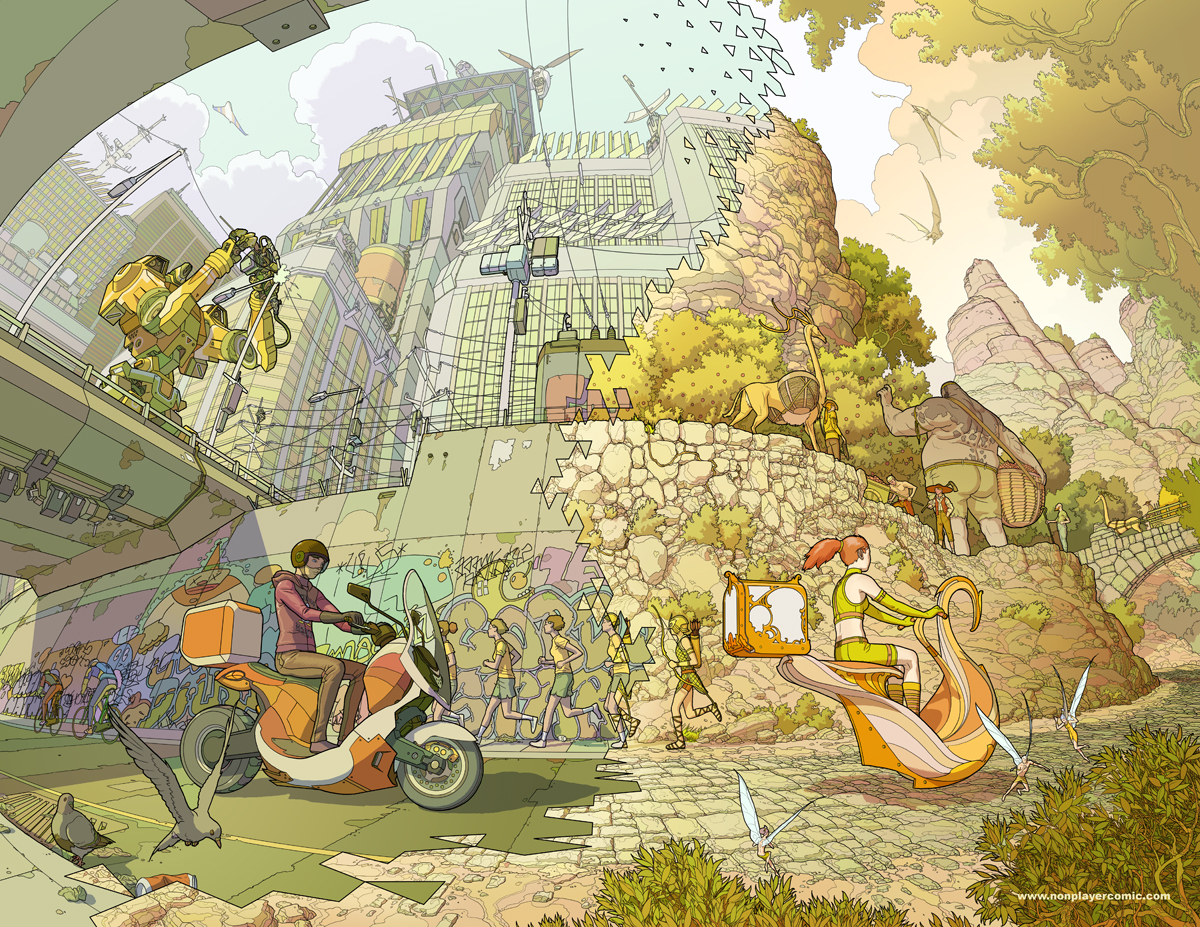But in terms of direct causes for my career change, I quit pretty soon after seeing a book of Hayao Miyazaki's storyboards for Nausicaa. It was such a pristine, complete vision, and all from one guy! That was very exciting to see.PA) Are there any games that you worked on that you can talk about? Any highlights to your career?
NS) I was the lead artist on Demigod, and I'm still very proud of what that team achieved. I also did either concepting or modeling for Supreme Commander 2, Space Siege, GoPets, and Starfleet Command 2.PA) Nonplayer is obviously influenced by video games, but what inspired the idea and lead to it's development?
NS) I think it came from a lot of things that I'd been reading about but that didn't seem to be popping up too frequently in contemporary fiction. Americans, in particular, seem to be stuck in an apocalyptic mindset right now, so all we're getting is zombies and vampires. I don't think that's the future that's in store for us, though. There's all this amazing stuff on the horizon -- augmented reality, robust artificial intelligence, true virtual worlds. Maybe my work in games kept me on the outskirts of these disciplines, so I've been watching them with a lot of interest. Guys like Vernor Vinge and Ray Kurzweil have been very influential to my way of thinking about the future. Nonplayer comes from all of that.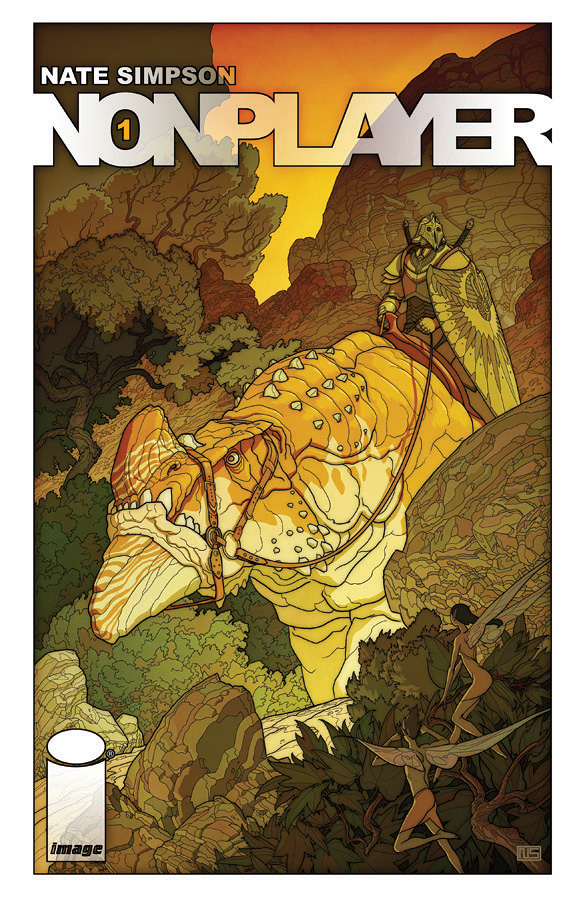
PA) What was your main influence for the main character Dana? What personalty type do you see her as and what will she become as the story progresses?
NS) Dana's a gifted but aimless young woman who splits her time between a minimum-wage fast food job and a secret life as an assassin in the online world of Jarvath. She's given up on the idea of accomplishing anything in the real world -- the only reason she bothers with a job at all is to help pay for her little sister's tuition. On the side, she builds virtual worlds as a hobby. She has some amazing creative gifts, but having received one rejection letter from a game company, she's decided she's no good. As far as her personality, she's one of those people who thinks she's irrelevant, and gets surprised when people are hurt by her offhand rudeness. In the real world, she's an ant. In Jarvath, her actions feel like they have consequences.PA) Personally I was drawn to the book by the art style. How long have you been drawing for and are how did you learn or are you self taught?
NS) Like pretty much everybody else, I've been drawing since I was a kid. I have very strong memories of this other kid in first grade who drew much better than I did, and how envious that made me! I was socially awkward and spent many hours by myself, so that gave me plenty of time to live in make-believe worlds. And I think I came across inspiring artwork at exactly the right times in my life, so I always had someone to emulate. First it was the dinosaurs of William Stout, then Moebius, then Geof Darrow, and finally Arthur Rackham in high school. Those four guys had all the answers, art-wise.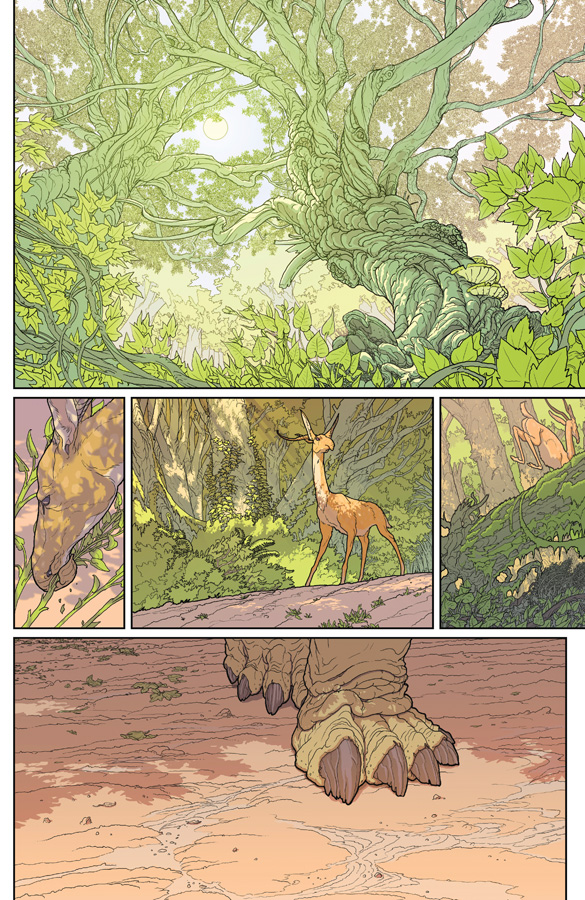 I have had some formal art training, as well, though to be honest I'm not sure it had much effect on my development as an artist. My parents sent me to an art class in LA called KidsArt in my early teens, and I copied a lot of old paintings there. And after giving up on paleontology at the University of Chicago, I transferred to the School of the Art Institute of Chicago, where I did a lot of figure painting. I think I probably learned a few things about color there.
I have had some formal art training, as well, though to be honest I'm not sure it had much effect on my development as an artist. My parents sent me to an art class in LA called KidsArt in my early teens, and I copied a lot of old paintings there. And after giving up on paleontology at the University of Chicago, I transferred to the School of the Art Institute of Chicago, where I did a lot of figure painting. I think I probably learned a few things about color there.PA) Aside from the art itself the coloring of the book is some of the most impressive in comics today. What do you use to color? I'm guessing it's a computer program, but I could be wrong.
NS) Everything from rough layouts through final color was done in Photoshop using a Wacom Cintiq 21UX tablet monitor. I usually don't have very strong ideas about color, so digital tools allow me to experiment with different sliders and blend modes until something suggests itself. And I get a lot of mileage out of layers -- some of the pages come close to 200 layers of color.PA) What's in the future of Nonplayer? Is there anything you can tell me about the second issue or the overall story arc?
NS) Nonplayer is planned for a six-issue run, though as has been reported elsewhere, I've been running into some challenges fitting the entire arc into that many issues. There may either be a seventh bonus issue, or we may look into making the sixth issue double-length.
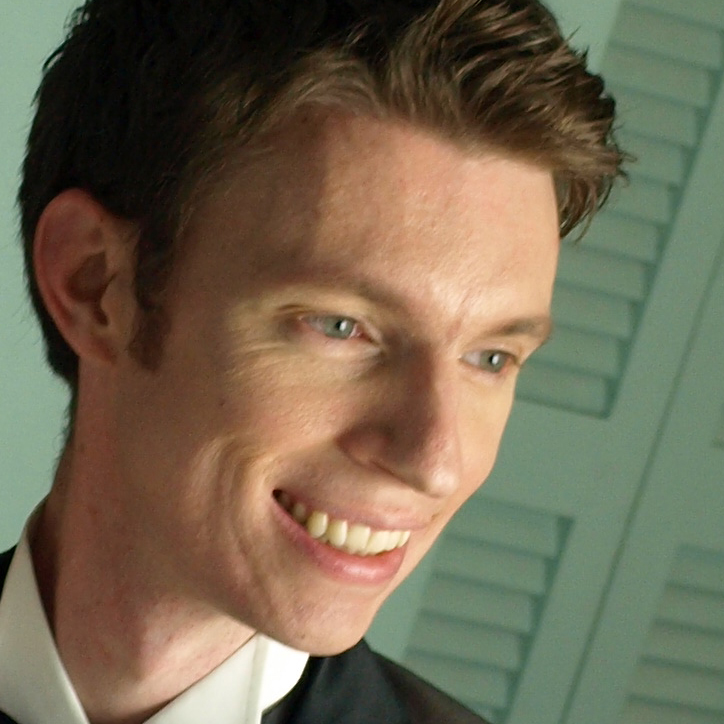 NS) I think a lot of game artists are jealous of the autonomy and notoriety that comic artists enjoy -- when you make games, you're burdened with all sorts of design limitations, technical constraints, and deadines. By contrast, comic artists get to work on a vast canvas with virtually no externally-imposed limits. The main drawback is the isolation. I miss being around creative people all day. Also, I miss having money.
NS) I think a lot of game artists are jealous of the autonomy and notoriety that comic artists enjoy -- when you make games, you're burdened with all sorts of design limitations, technical constraints, and deadines. By contrast, comic artists get to work on a vast canvas with virtually no externally-imposed limits. The main drawback is the isolation. I miss being around creative people all day. Also, I miss having money. PA) What was your main influence for the main character Dana? What personalty type do you see her as and what will she become as the story progresses?
PA) What was your main influence for the main character Dana? What personalty type do you see her as and what will she become as the story progresses? I have had some formal art training, as well, though to be honest I'm not sure it had much effect on my development as an artist. My parents sent me to an art class in LA called KidsArt in my early teens, and I copied a lot of old paintings there. And after giving up on paleontology at the University of Chicago, I transferred to the School of the Art Institute of Chicago, where I did a lot of figure painting. I think I probably learned a few things about color there.
I have had some formal art training, as well, though to be honest I'm not sure it had much effect on my development as an artist. My parents sent me to an art class in LA called KidsArt in my early teens, and I copied a lot of old paintings there. And after giving up on paleontology at the University of Chicago, I transferred to the School of the Art Institute of Chicago, where I did a lot of figure painting. I think I probably learned a few things about color there.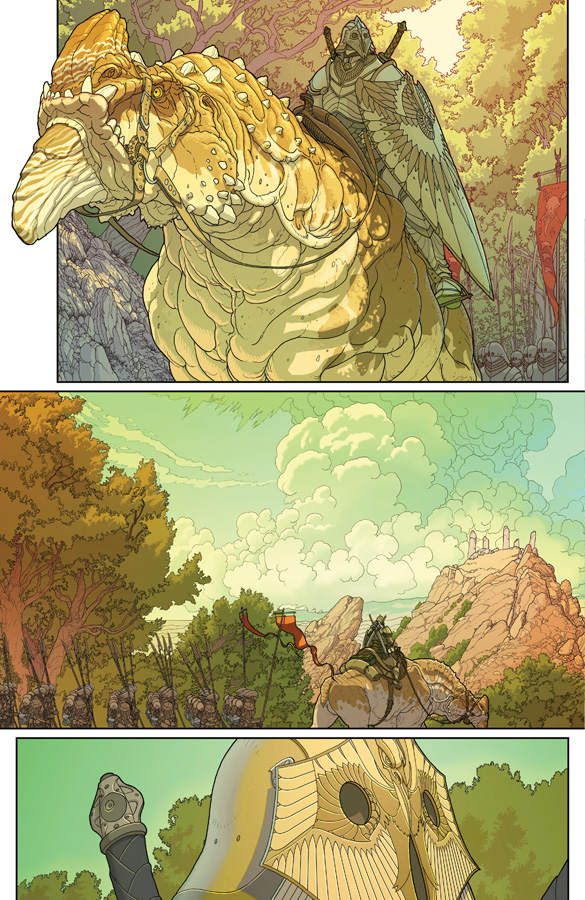 PA) Do you have further plans for a second series of Nonplayer or even an ongoing series or is it a self-contained story?
PA) Do you have further plans for a second series of Nonplayer or even an ongoing series or is it a self-contained story?